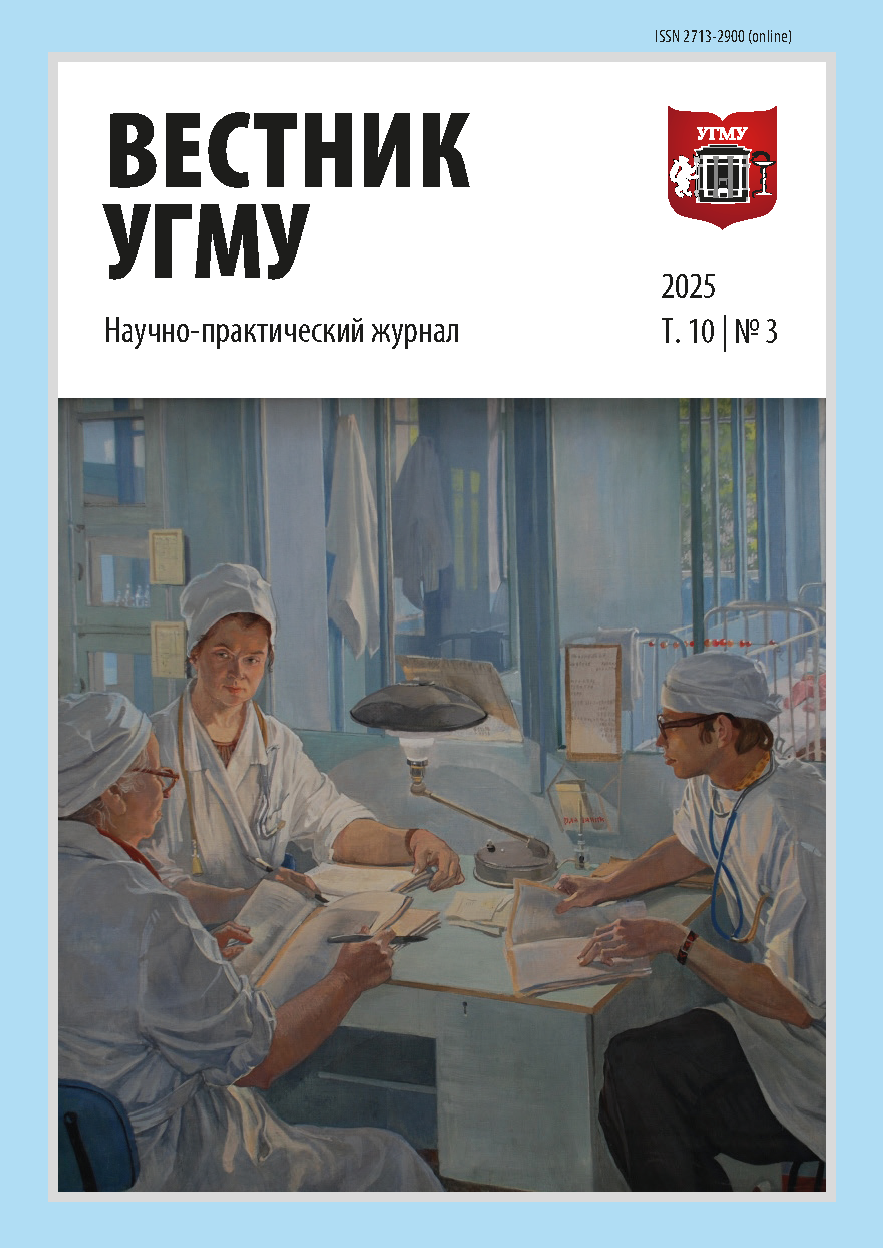Abstract
Introduction. Obstruction of the urinary tract by a calculus causes renal dysfunction, increases the risk of renal failure, and requires its emergency relief. The main clinical signs that allow us to suspect the possibility of renal colic include pain in the lumbar region, nausea, vomiting, and macro- or microhematuria. However, history and physical examination alone are imperfect in diagnosing renal colic, and additional methods of pathology imaging are needed.
The purpose of this work is to present the experience of diagnosis and treatment of children with renal colic as a manifestation of urolithiasis in the conditions of emergency surgical care at the Children’s City Clinical Hospital No. 9.
Materials and methods. In the Surgical Department No. 3 from 2011 to 2024, 486 children aged 1 to 18 years with clinical presentation of renal colic against the background of urolithiasis were treated on an emergency basis. The children underwent emergency laboratory diagnostics, sonography, and since 2021, CT urography, which allowed dividing all the material into 2 groups (before and after the introduction of CT diagnostics with bolus contrast): I — n = 194; II — n = 292.
Results and discussion. In half of the cases, emergency surgical treatment was provided. In group I (2011–2020) 35/194 (18 %) children required surgical treatment to relieve renal obstruction. In the group II (2021–2024) 217/292 (74 %) patients received surgical care.
Conclusions. The emergency hospitalization of children with renal colic has increased since 2021 after the change in the diagnostic protocol for children with urolithiasis. The introduction of CT with bolus contrast and its emergency use has improved the diagnosis of the cause of renal colic in children. The significant effectiveness of CT in urolithiasis has been proven, which has improved not only diagnostics, but also influenced the tactics of emergency admission of patients with renal colic.
For citation
Zhaksalykov AS, Komarova SYu, Tsap NA, Osnovin PL, Osnovin LG, Sysosev SG, et al. Optimization of diagnostics of urolithiasis in children in emergency surgical care. USMU Medical Bulletin. 2025;10(3):e00182. (In Russ.). DOI: https://doi.org/10.52420/usmumb.10.3.e00182. EDN: https://elibrary.ru/QBRGGA.
References
Лопаткин НА (ред.). Урология. Национальное руководство. Краткое издание. Москва: ГЭОТАР-Медиа; 2013. 608 с. [Lopatkin NA (ed.). Urology. National guidelines. Brief edition. Moscow: GEOTAR-Media; 2013. 608 p. (In Russ.)].
Маликов ШГ, Зоркин СН, Акопян АВ, Шахновский ДС. Современный взгляд на проблему лечения уролитиаза у детей. Детская хирургия. 2017;21(3):157–162. [Malikov ShG, Zorkin SN, Akopyan AV, Shakhnovsky DS. Modern view on the problem of urolithiasis treatment in children. Russian Journal of Pediatric Surgery. 2017;21(3):157–162. (In Russ.)]. EDN: https://elibrary.ru/YTBDVB.
Кяримов ИА. Мочекаменная болезнь у детей: современные возможности диагностики и лечения. Российский педиатрический журнал. 2023;26(3):218–221. [Kyarimov IA. Urolithiasis in children: Modern diagnostic and treatment options. Russian Pediatric Journal. 2023;26(3):218–221. (In Russ.)]. DOI: https://doi.org/10.46563/1560-9561-2023-26-3-218-221.
Alfandary H, Haskin O, Davidovits M, Pleniceanu O, Leiba A, Dagan A. Increasing prevalence of nephrolithiasis in association with increased body mass index in children: A population based study. The Journal of Urology. 2018;199(4):1044–1049. DOI: https://doi.org/10.1016/j.juro.2017.10.023.
Ward JB, Feinstein L, Pierce C, Lim J, Abbott KC, Bavendam T, et al. Pediatric urinary stone disease in the United States: The urologic diseases in America Project. Urology. 2019;129:180–187. DOI: https://doi.org/10.1016/j.urology.2019.04.012.
Robinson C, Shenoy M, Hennayake S. No stone unturned: The epidemiology and outcomes of paediatric urolithiasis in Manchester, United Kingdom. Journal of Pediatric Urology. 2020;16(3):372.e1–372.e7. DOI: https://doi.org/10.1016/j.jpurol.2020.03.009.
Разумовский АЮ (ред.). Детская хирургия. Национальное руководство. 2-е изд., перераб. и доп. Москва: ГЭОТАР-Медиа; 2021. 1280 с. [Razumovsky AYu (ed.). Pediatric surgery. National guidelines. 2nd ed., rev. and enl. Moscow: GEOTAR-Media; 2021. 1280 p.]. DOI: https://doi.org/10.33029/9704-5785-6-PSNR-2021-2-1-1280.
Аполихин ОИ, Сивков АВ, Комарова ВА, Просянников МЮ, Голованов СА, Казаченко АВ, и др. Заболеваемость мочекаменной болезнью в Российской Федерации. Экспериментальная и клиническая урология. 2018;(4):4–14. [Apolikhin OI, Sivkov AV, Komarova VA, Prosyannikov MYu, Golovanov SA, Kazachenko AV, et al. Incidence of urolithiasis in the Russian Federation. Experimental and Clinical Urology. 2018;(4):4–14. (In Russ.)]. EDN: https://elibrary.ru/VRTKIC.
Haroun AA, Hadidy AM, Mithqal AM, Mahafza WS, Al-Riyalat NT, Sheikh-Ali RF. The role of B-mode ultrasonography in the detection of urolithiasis in patients with acute renal colic. Saudi Journal of Kidney Diseases and Transplantation. 2010;21(3):488–493. PMID: https://pubmed.gov/20427874.
Wong C, Teitge B, Ross M, Young P, Robertson HL, Lang E. The accuracy and prognostic value of point-of-care ultrasound for nephrolithiasis in the emergency department: A systematic review and meta-analysis. Academic Emergency Medicine. 2018;25(6):684–698. DOI: https://doi.org/10.1111/acem.13388.
Ganesan V, De S, Greene D, Torricelli FC, Monga M. Accuracy of ultrasonography for renal stone detection and size determination: Is it good enough for management decisions? BJU International. 2017;119(3):464–469. DOI: https://doi.org/10.1111/bju.13605.
Brisbane W, Bailey M, Sorensen M. An overview of kidney stone imaging techniques. Nature Reviews Urology. 2016;13:654–662. DOI: https://doi.org/10.1038/nrurol.2016.154.
This work is licensed under a Creative Commons Attribution-NonCommercial-ShareAlike 4.0 International License
Copyright © 2025 Zhaksalykov A. S., Komarova S. Yu., Tsap N. A., Osnovin P. L., Osnovin L. G., Sysosev S. G., Arzhannikov A. A., Dedyukhin N. A.






